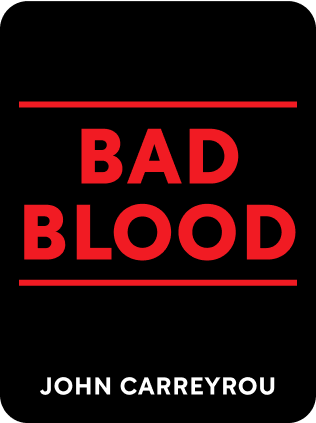

This article is an excerpt from the Shortform book guide to "Bad Blood" by John Carreyrou. Shortform has the world's best summaries and analyses of books you should be reading.
Like this article? Sign up for a free trial here .
What is the Theranos story? What happened to the company Theranos and why did it fail?
The Theranos story is about the rise and fall of the Silicon Valley startup that promised to revolutionize healthcare. Theranos took the world by storm but was unable to deliver on their promises.
Read more about the Theranos story and what happened to the once-promising health startup.
The Theranos Story
Theranos had a vision people wanted to believe in – “detect diseases early so no one has to die unnecessarily.” All types of stakeholders saw what they wanted to see in it, allowing large suspension of disbelief. By telling the Theranos story, they sold what investors wanted to see.
- Investors saw a huge financial opportunity. The medical testing market is huge – allowing patients to test at home, and using the resulting data to inform medical decisions, makes it even bigger.
- Patients and their families saw better decisionmaking and less pain.
- The public saw a thrilling female founder who could be the next Steve Jobs. They wanted to celebrate a brilliant female innovator in an age of female empowerment.
- Partners like Walgreens and Safeway saw a way to compete against competitors like CVS, and to rejuvenate their financials. So they partnered with Theranos to roll out blood-testing clinics at their locations.
- Senior mentors like George Schultz, General Mattis saw a granddaughter-like figure to mentor. So they lent their name to Theranos as advisors.
- Anyone with equity (employees, investors, and advisory board included) had a huge incentive to believe the company would work.
Elizabeth Holmes practiced charismatic techniques to win over supporters.
- Elizabeth spoke sincerely and enthusiastically about the mission. It gave the impression that there was no way someone with this sincerity could be beguiling.
- To the Walgreens CFO, Elizabeth gave a gift of an American flag “flown over Afghanistan” with a dedication to Walgreens written on it.
- Many people repeated: “she had this intense way of looking at you while she spoke that made you believe in her and want to follow her.” Here’s an example of Holmes speaking in a Theranos promotional video.
- She apparently affected her voice to be a strikingly low baritone, possibly convinced it would lead to better results in a male-dominated world.
Stakeholders used pattern matching to jump to wrong conclusions.
- On paper, the technology fit the pattern of disruption – dramatically lower cost replacing the dinosaur incumbents, leading to massive adoption and market expansion. The story was intoxicating and irresistible.
- Holmes looked like the stereotypical genius dropout founder. She even deliberately cast a resemblance to Steve Jobs with black turtlenecks.
- They crafted a cohesive narrative. From childhood, Elizabeth had a phobia of needles that led to the breakthrough technology.
It’s common for early stage startups raise money without a product. But typically, when they don’t show meaningful progress, their investors back out and they shut down. This is where the Theranos story changes.
How could Theranos continue its operations for over a decade, when its product did virtually nothing it claimed?
In summary, it was a combination of active deception by Theranos management, combined with psychological biases preventing outsiders from pushing further for the truth.
The Theranos story is riddled with deception and fraud. And though Theranos enjoyed years of being on top of the world, things changed. The Theranos story has a legacy of deception and failure.

———End of Preview———
Like what you just read? Read the rest of the world's best book summary and analysis of John Carreyrou's "Bad Blood" at Shortform .
Here's what you'll find in our full Bad Blood summary :
- How a 19-year-old Stanford dropout created a fraudulent company that deceived savvy investors
- What Theranos claimed their proprietary technology could do
- How psychological biases could cause you to fall for such a deception






